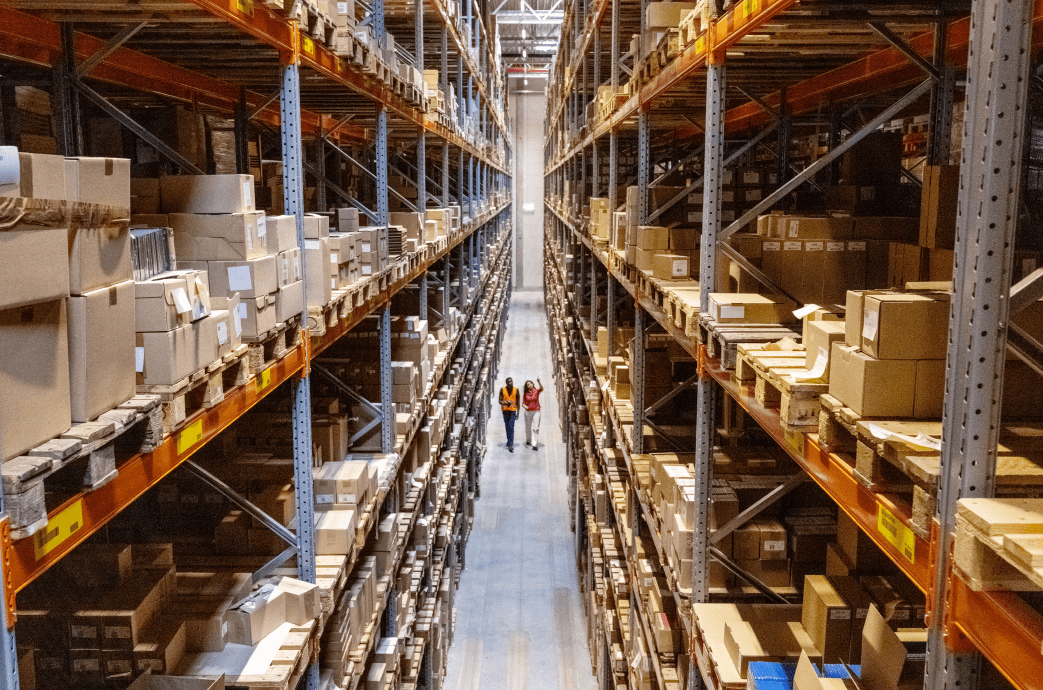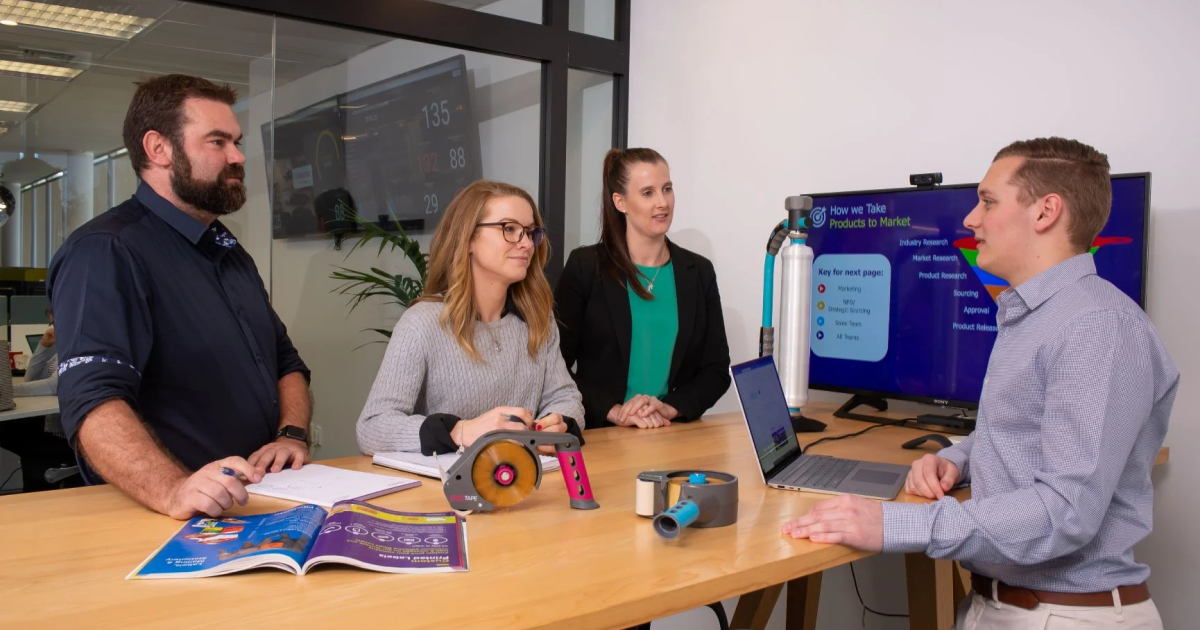.jpg?width=600&height=401&name=DSC_7809%20(1).jpg)
If you operate a warehouse, you need a combination of various types of packaging. While consumer-facing packaging is vital, you also need to consider the logistical packaging elements as well.
In this article, we explain the main types of packaging, including those used in a warehouse environment. If you are looking for ways to improve your warehouse operations, find our expert advice and product recommendations below.
Packaging categories
The main categories of packaging in a warehouse include primary packaging, secondary packaging, and tertiary packaging.
Primary packaging
The purpose of primary packaging is to contain, store, and protect a product. It is the vessel the product is kept in until the customer purchases and removes it. For example, if a customer wants to buy corn chips, the bag containing the chips is the primary packaging.
Primary packaging comes in various forms, including, but not limited to:
- Tins
- Jars
- Bottles
- Bags
- Small cube boxes or die-cut boxes
- Blister packs
Primary packaging is closest to the product so it must maintain optimum conditions, showcase the product to consumers, and protect the contents.
Secondary packaging
The next step up is secondary packaging, or grouped packaging, which bundles together multiple items in primary packaging to make it easier to transport and store.
Secondary packaging consists mostly of cardboard boxes or cartons. For example, if the primary packaging is a bag of corn chips, the secondary packaging would be a box containing multiple bags.
Examples of secondary packaging include:
- Cardboard cartons
- Cardboard boxes
- Wooden crates
Tertiary packaging
Tertiary packaging, or load packaging, is what primary and secondary packaging are contained in. Its purpose is to create larger load units that make it easier to store, transport, and distribute. The goal of tertiary packaging is to maintain load stability, increase storage capacity, and increase e-commerce warehouse efficiency.
Examples of tertiary packaging include:
- Pallets and pallet wrap
- Containers
- Corrugated cardboard boxes
- Cardboard pallet boxes
- Drums
- Reels
- Sacks
- Big-bags
- Intermediate Bulk Containers (IBCs)
Internal packaging vs external packaging
In business operations, there are both internal and external types of packaging. In this section, we explain the difference between the two and how to find the right combination for your warehouse.
Internal packaging
Internal packaging is what customers see on the shelf. The main purpose of internal packaging is to showcase what the product is, its ingredients, and any benefits it provides. Ultimately, internal packaging is what promotes the product on a consumer level.
Common examples include branded boxes, jars, cans, bags, and bottles.
Inner packaging
It is important to note that internal packaging shouldn't be confused with inner packaging, which is used to protect packaged items during transit. Common examples of inner packaging include loose fill, bubble wrap, or machine-crumpled kraft paper which are placed inside boxes or bags to fill voids.
External packaging
On the other hand, external packaging is used for storage and distribution purposes and is purely functional. It is designed to protect internal packaging from damage, simplify storage and transport, and display relevant information for warehouse staff.
Examples of external packaging are:
For more information on external packaging solutions, download a free copy of our Retail and E-commerce Supplies Guide.
The role of packaging in a warehouse
For a warehouse to operate effectively, you need a combination of all of the above types of packaging. By using primary, secondary and tertiary packaging as well as internal and external packaging, you can ensure your customers are happy and your warehouse staff can work efficiently.
The main advantages of warehouse packaging are as follows.
Damage protection
First and foremost, packaging should protect the products. To do so, you need to include primary, secondary, and tertiary packaging in your warehouse operations. This will ensure your products have maximum safety from spills, drops, and any impacts that occur in your warehouse or line of distribution.
Warehouse efficiency
Secondary and tertiary packaging directly improve the efficiency and productivity of your warehouse processes. For example, storing products in stackable packaging ensures your warehouse staff have more space to move and helps to avoid forklift damage from obstacles.
Faster transportation
Effective product packaging not only improves your turnaround windows but also improves the delivery processes once products leave your warehouse. By prioritising stackable packaging, labelling, and protective packaging, couriers can complete deliveries much faster.
How to optimise your warehouse packaging
1. Assess your packaging processes
Start by identifying any areas you can improve on. For example, can all your packages be stacked? Is there a high rate of returns due to product damage? What areas of your warehouse are most backlogged?
2. Develop a packaging plan
Create a plan to solve the issues you identified. For example, if you want to reduce product damage rates, make a note to invest in better protectives. If you want to speed up pallet stacking, consider investing in a pallet wrap machine.
3. Analyse waste data
If you notice a high level of wasted packaging, you may need to adjust your processes or start using a more suitable packaging product. For example, are you using the right pallet wrap? If products are being damaged too often, can you invest in kraft paper void fill, bubble wrap, or custom-fit void fill?
4. Warehouse automation
If you want to reduce double handling and inefficiencies, warehouse automation may help. For example, consider incorporating Warehouse Management Systems (WMS), warehouse drones, and digital barcode scanners to increase productivity.
5. Sustainable packaging
Finally, consider how sustainable packaging could improve your warehouse operations, as well as the customer experience. For example, sustainable paper packaging helps to attract consumers who are conscious of their environmental impact while also reducing your warehouse’s material waste and related costs.
Are you ready to optimise your packing supplies? The Primepac team is here to help. We supply a wide range of packaging materials for warehouses and e-commerce, including:
- Cartons and boxes
- Protective packaging
- Packaging tape
- Pallet wrap and pallet wrapping accessories
- Packaging labels
- Warehouse Health and Safety equipment
- Office and warehouse supplies
- Custom packaging
- Sustainable packaging
Contact us today or download our retail and e-commerce catalogue to browse our range of packaging supplies for your warehouse.





.png)

